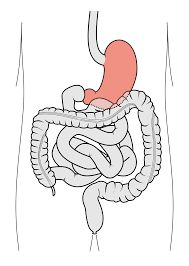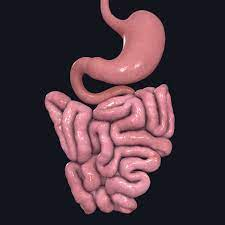What is Asthma?
- Leandra Cardenas

- Mar 24, 2022
- 6 min read
Asthma has been perplexing humanity for as long as anyone can remember, since the ancient Greeks first identified it as a medical condition and developed remedies that still remain the basis of asthma treatments today. Over time, humankind discovered how to treat asthma in the majority of cases, but never truly figured out what caused it or how to stop it from striking those unlucky enough to suffer from it. In this article, we’ll take a look at the history of asthma through the ages to see how far we’ve come as well as our pursuit to cure it once and for all.
Asthma is a chronic respiratory disease that affects the lungs. It is characterized by episodes of wheezing, shortness of breath, chest tightness, and coughing. Asthma can be triggered by environmental factors such as dust, pollen, or smoke and is also often hereditary. The exact cause of asthma is unknown, but it is believed to be caused by a combination of environmental and genetic factors. The first recorded case of asthma was in the Ebers Papyrus, an ancient Egyptian medical text dating back to 1550 BC. Since then, asthma has been mentioned in many historical texts and documents from around the world. It is thought that this disease originated with early humans because it shares similarities with the breathing patterns observed in chimps and gorillas. In more recent times, it has been discovered that there are two types of asthma: atopic and non-atopic. Non-atopic causes are unknown, but atopic is genetic, sometimes being passed down through families or occurring when an individual's immune system doesn't function properly.

Asthma affects people of all ages, but it is most common in children. It is estimated that asthma causes 439,000 deaths per year worldwide. More than 20% of asthmatics will die from the condition. In America alone, one in eleven children suffers from asthma. It is one of the leading causes of missed school days and days lost at work or on household duties. As a result, proper treatment can help patients live longer lives with fewer complications or severe consequences. There are three different types of asthma: allergic (which is triggered by allergens), exercise-induced (triggered during physical activity), and irritant-induced (triggered when exposed to irritants). Each type can have its own set of triggers, which vary among individuals depending on their exposure history.
Though the causes of asthma are still unknown, there are some environmental factors that seem to trigger the disease. These include: air pollution, cigarette smoke, dust mites, pollen, and pet dander. All of these can irritate the lungs and cause an asthma attack. Air pollution is one of the most common triggers. There are two ways in which it may lead to an asthma attack. Firstly, high levels of ozone can be produced when pollutants such as nitrogen oxides and carbon monoxide mix with sunlight. Ozone is a gas that makes the lungs swell up and makes it hard for people with asthma or other breathing problems to breathe. Secondly, exhaust fumes from vehicles contain nitrogen dioxide and hydrocarbons, which create low-level air pollution; both have been linked with triggering attacks in asthmatics. Other sources of asthma triggers include smoking cigarettes, exposure to secondhand smoke, some types of house dust (specifically microscopic mites found on bedding and upholstery), animal hair and dander (found on cats, dogs, and birds), and changes in weather conditions, including hot/humid days and cold dry winters.

Pollen is also known to contribute to asthma attacks by causing swelling in the small airways and blocking them so they cannot get oxygen. Those who have seasonal allergies often experience these effects during their allergy season due to increased amounts of pollen in the air. Pollen usually comes from plants like trees, grasses, weeds, and grains and starts releasing pollen in early spring before plants go dormant for winter. Fungi and mold spores are also triggers for people with asthma because they release irritating chemicals called allergens into the air that can worsen symptoms. Pet dander is another common allergen that may worsen symptoms in people with asthma. However, this is not often recognized as a trigger because it isn't always obvious what pets are around during an asthma attack.
The treatments and symptoms of asthma are still not fully understood by medical professionals. The most common symptom is shortness of breath, but other symptoms can include coughing, wheezing, and chest tightness. These symptoms can be triggered by a variety of things, including allergens, cold air, exercise, and emotional stress. There is no cure for asthma, but there are treatments that can help manage the symptoms. In severe cases, hospitalization may be necessary. Current treatment options for people with moderate to severe asthma include corticosteroids, long-acting beta agonists (such as Advair), leukotriene receptor antagonists (such as Singulair), mast cell stabilizers (such as cromolyn sodium), and medications to open up constricted airways (bronchodilators such as albuterol). While there is no cure yet, these treatments offer relief from the more intense symptoms. As we learn more about this condition, new treatments will continue to emerge.
One new discovery was identified in 2013 when it was found that most asthmatics have low levels of vitamin D. Scientists have theorized that this deficiency could cause inflammation in the lungs and worsen asthma symptoms. Common prevention strategies for those with mild asthma involve maintaining adequate levels of fluid intake, following appropriate sleep patterns, limiting activities that make breathing difficult, avoiding high altitudes and cigarette smoke, avoiding dust mites and pets where possible, washing hands often, and using an inhaler as needed. Currently, there is no cure for asthma, but a myriad of treatments are available to help patients live comfortably with their condition.
No one knows exactly who gets asthma, when they will get it, why they will get it, or how severe the condition is likely to be. All we know is that asthma is a respiratory disease that causes inflammation and narrowing of the airways. This can lead to difficulty breathing, wheezing, coughing, and tightness in the chest. Asthma can be a minor annoyance or a life-threatening condition. It is estimated that 300 million people worldwide suffer from asthma, and the number seems to be rising. In industrialized countries like Canada, asthma affects 10% of children under 18 years old and 5% of adults. The prevalence rates are much higher in developing countries.
In South Africa, up to 20% of children have been diagnosed with asthma by age 6 years old. In India, nearly 15% of all hospital admissions are due to asthma. There are many factors that contribute to the high rates of asthma in these areas, including environmental pollution and poor living conditions. These unfortunate circumstances make it difficult for those who suffer from asthma to cope because their air quality is so poor. Pollution aggravates existing symptoms as well as causes new ones. Air pollution can also exacerbate allergy symptoms as well as increase sensitivity to triggers such as dust mites, smoke, and animal dander, all of which have been linked to worsening asthmatic symptoms. Poor living conditions often mean overcrowded spaces where allergens gather easily, leading to allergies or sensitivities being made worse than they might otherwise be in cleaner environments.
While the medical community has made great strides in understanding and treating asthma, there is still much mystery surrounding the disease. For centuries, asthma has baffled humanity. It is a respiratory disease that can be triggered by a variety of environmental and emotional factors. While it is often thought of as a childhood illness, asthma can affect people of all ages. The good news is that there are many effective treatments available to help people manage their asthma. With proper treatment, people with asthma can lead normal, healthy lives.
One recent development that may impact future research on asthma is the emergence of an airborne virus called rhinovirus C (RV-C). RV-C affects about 5% of people with asthma who also have chronic sinusitis. But researchers don't know if the virus triggers asthma attacks or worsens symptoms. Preliminary findings suggest that children with recurrent wheezing from viral infections should be tested for asthma. Researchers hope this new finding will help unlock one of the mysteries of asthma. What's more, other studies show that asthma rates are higher among those exposed to air pollution than those not exposed. Again, the reasons why aren't clear, but they might include genetic differences in people's responses to air pollution or even exposure at an early age. Still, these interesting changes open up interesting ways to study the causes and treatments of asthma in the future.




Comments